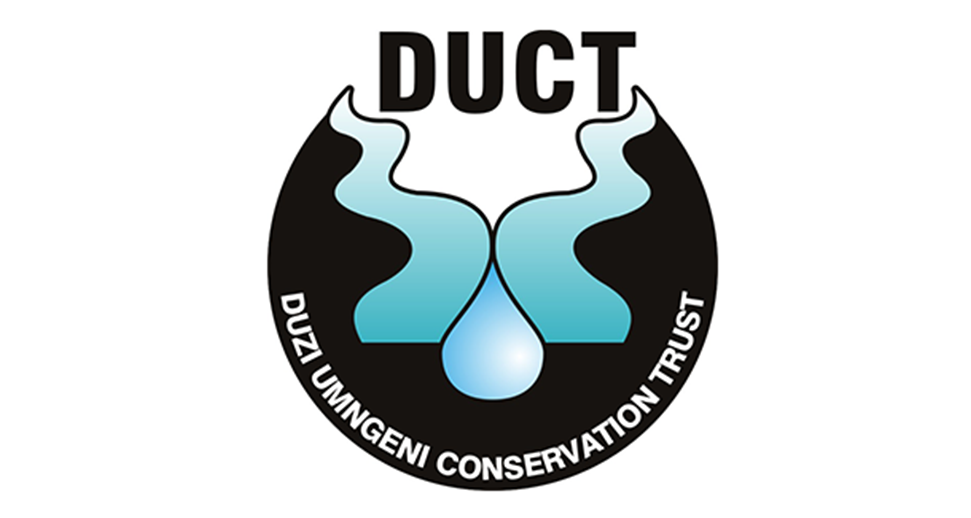A dairy farm that has a seemingly perfectly operating slurry dam was passed – with no sign of contamination of the river – another mini sass score of 6.2 below the farm. No deterioration since the last mini sass. Could we finally be leaving the major impacts?
Wishful thinking! Another wattle jungle, more horrendous log jams, more sludge on the river rocks, pools of algae as the river plunged down a group of cascades before hitting the flats – and veld grazed areas and pastures without invasives. A Mini Sass score of 6.4, the highest yet (Fair condition), before we again hit thickets of invasives of various kinds, going from bad to worse – another stretch where we had to fight our way through jungles of wattle, periwinckle and wandering jew. A series of beautiful waterfalls greeted us through the invasive undergrowth – what a stunning section of river this could be! More timber planted to the waters edge or into the buffer – some newly planted trees! More wattle jungles – this could keep DUCT River Care Teams busy for years….
We passed Lidgetton Village – with an informal settlement on the river floodplain / banks – plastic litter floating in the river, pit latrines only metres from the river, people forced to use this filthy water for their daily needs. Then the water fall downstream of Lidgetton, where the river is reduced by this stage to a trickle from the extensive abstraction all the way up stream. Mini sass score 5.2 (Poor condition – largely modified). No surprise there. However, much to our surprise, downstream of the waterfall for the first time the river started to heal and seemed to appear healthier – less silt in the water, less turbidity, no algae or aquatic weeds, pristine indigenous bush on the banks and hill sides. Past Caversham Mill, we finally, for the first time since the source, could see the rocks on the river bed – actually see their surfaces, free of any silt.
Part of the reason for doing the walk in late September was to catch the river before it swelled from summer rains – to enable us to cross easier (not realising that most of the river comprised deep channels), and also to be able to do mini sass and have a clearer view of the health of the river. We however, never added the transfer scheme from Mearns Weir into the equation. Only metres from the spot where the river after 6 days finally seemed to be rid of silt and sludge, we hit the confluence with the Impofana stream into which the Mearns transfer empties water from the Mooi River. The Mpofana entered the Lions in a torrent of chocolate brown flood water, which never dissipated prior to entering the uMngeni just upstream of Midmar Dam. From here, the Lions begins to meander through spectacular floodplains and the afternoon of the 6th day, and the morning of the 7th day were the most beautiful since the source area. Beautiful grasslands and wetlands, wild flowers, timber planted well back from the buffer zone – what a pleasure. Until we hit the small holdings of Lions River. The properties are neat and their river banks well cared for – unlike the plantation regrowth and mess on the opposite bank.
Our last day from the Lions River small holdings began with bramble detours, and ended with a pleasant stroll on the floodplain below Thokans store – aside from a few small poplar plantations and some shallow historical drainage ditches, all seemed well here, and suddenly we rounded a horseshow bend of the river and there lay the confluence with the uMngeni – a silt line like a childs coloured in picture marking the Lions and uMngeni waters joining.
Somehow it was all an anti-climax. Today after only 3 days back home, the walk is like a memory of something done a long time ago – the same way the uMngeni Walk feels. After a week walking around 100 kilometres, perhaps the walk was too short to actually absorb everything, perhaps there were just too few natural unimpacted areas. I do know, however, that this system of walking a river gives an impressive picture of what is happening to that river.
We had our lighter moments along the walk – a pair of Jackal Buzzards circling us and giving us a low flypast, hearing Crowned Cranes often, as well as seeing a group of over 20 grazing in pastures. Beautiful wild flowers when we climbed high hills to skirt impenetrable bush, brambles or wetlands. Otter scats, reedbuck: sleeping across the river from our camp one night, fleeing from us at least 4 times as we came across them. Daily sightings of Duiker. The call of the fish eagle. Heart stopping river and fence crossings. Being out under the African Sky, with the breeze in our faces and the river winding over vast floodplains. A couple of cool dips in the river, and showers under cascades. The support crew meeting us with hot soup on a wet and freezing day, their regular calls to check where we were and that all was okay. The camaraderie whilst walking and in camp, the ice cold beer at the end of a hard days walking. The helpful and friendly people we met along the way, will all stay as the good memories of the walk, but are sadly overridden by the generally sorry state of the Lions River.
I think the name “River Walk” was a misnomer with the Lions. Yes we put one foot in front of the other to follow the rivers length, but a large portion of the time was spent either on hands and knees, climbing, swinging over and round or hacking our way through undergrowth, balancing precariously across log jams, slashing at bramble. Last year I read Ed Strattons book about his 3 year walk down the Amazon. At times down the Lions I began to have a small idea of what he went through! I guess “slack Packing” doesn’t describe it either! Whist I figure that one out, I will be ticking over which river to next proceed along.
- Penny Rees



